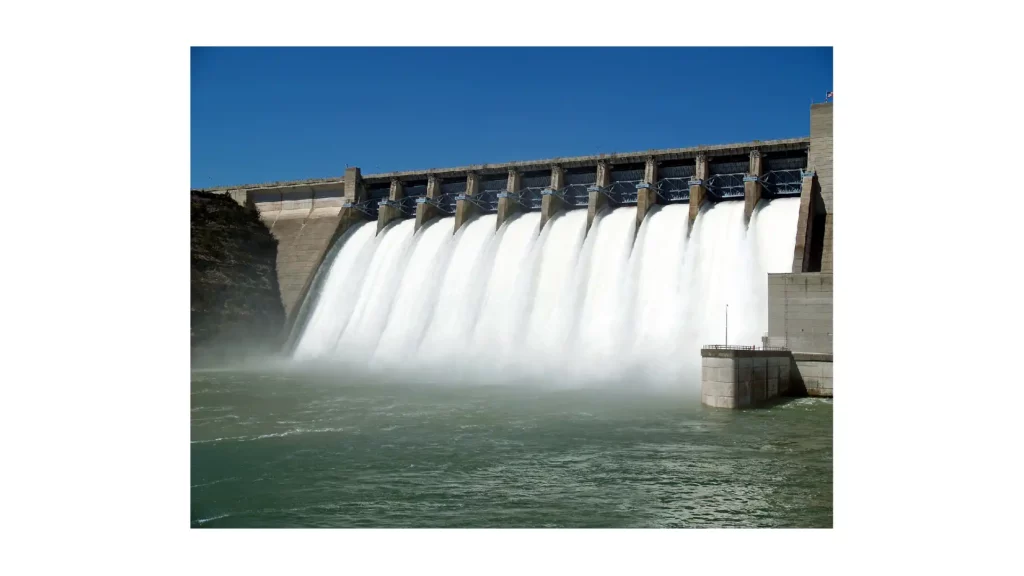In a world where the quest for renewable energy sources is becoming increasingly urgent, hydro green energy emerges as a beacon of hope.
Offering both environmental sustainability and reliable power generation, hydro green energy stands at the forefront of the renewable energy revolution.
In this guide, we delve into the intricacies of hydro green energy, exploring its benefits, technologies, challenges, and potential for widespread adoption.
Understanding Hydro Green Energy
Hydro green energy, also known as hydroelectric power, is electricity generated from the energy of moving water.
This renewable energy source harnesses the gravitational force of flowing or falling water to drive turbines, which in turn generate electricity.
Unlike fossil fuels, which emit harmful greenhouse gases and contribute to climate change, hydro green energy produces minimal carbon emissions, making it a clean and sustainable alternative.
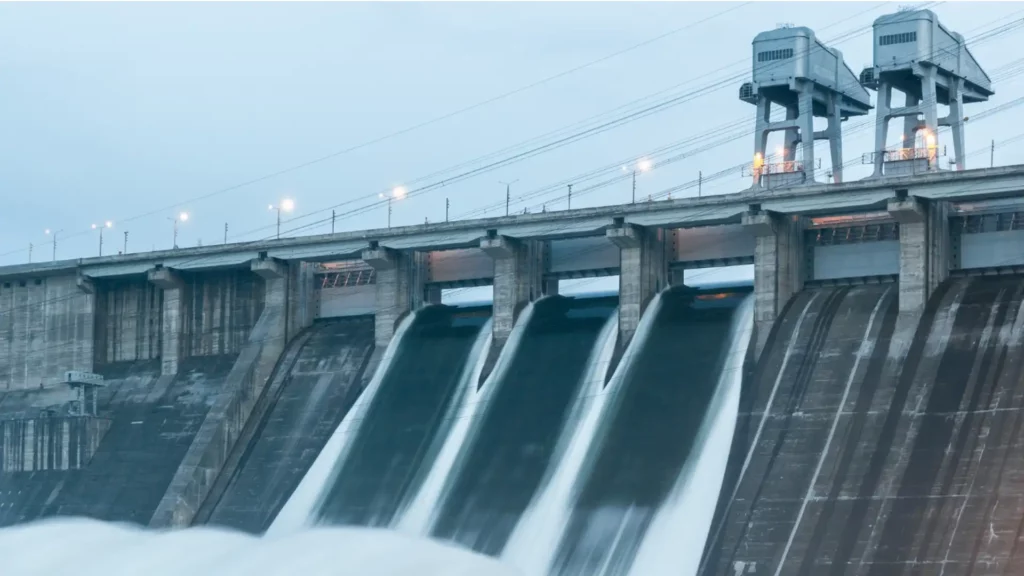
Benefits of Hydro Green Energy
- Renewable and Sustainable: Hydro green energy relies on the natural water cycle, ensuring an endless supply of energy as long as rainfall continues. This renewable nature makes it a sustainable long-term solution for energy generation.
- Low Emissions: Hydro green energy has a low environmental impact, emitting minimal greenhouse gases and reducing air pollution. This helps combat climate change and improve air quality, promoting a healthier environment for present and future generations.
- Reliable and Flexible: Hydroelectric power plants can quickly respond to changes in electricity demand, providing a reliable source of energy for both baseload and peak load requirements. The flexibility of hydroelectricity supports grid stability and enhances energy security.
- Flood Control and Water Management: Hydroelectric dams serve dual purposes by not only generating electricity but also providing flood control and water management capabilities. These dams help mitigate flood risks, regulate river flow, and ensure a stable water supply for various purposes, including irrigation and municipal use.
- Job Creation and Economic Development: The construction and operation of hydroelectric power plants create jobs and stimulate economic growth in local communities. Additionally, hydroelectric reservoirs and surrounding areas often become recreational destinations, attracting tourists and promoting sustainable tourism development.
- Energy Storage: Hydroelectric reservoirs can serve as natural energy storage systems, enhancing grid stability by storing surplus energy during periods of low demand and releasing it when demand is high. This capability supports the integration of variable renewable energy sources into the energy mix.
- Water Supply: Hydroelectric dams play a crucial role in managing water resources, ensuring a reliable water supply for drinking, irrigation, and industrial purposes. By regulating river flow and reservoir levels, hydroelectric infrastructure enhances water security and mitigates water scarcity.
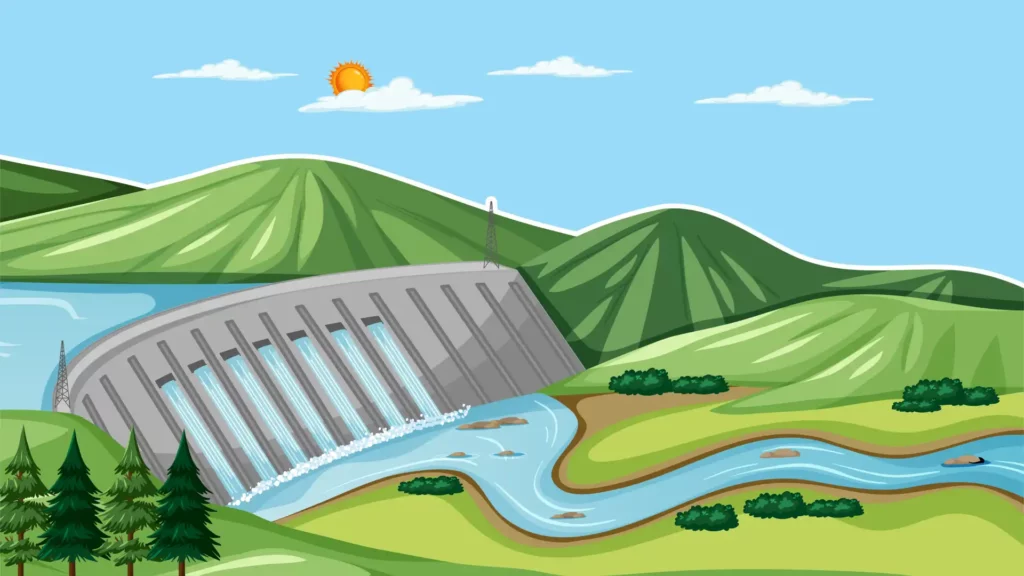
Going Green with Hydro Power: Embracing Sustainable Solutions
Harnessing the power of green hydro energy offers numerous opportunities for individuals, communities, and businesses to embrace sustainable practices and reduce their carbon footprint.
Here are several ways to go green with hydro power:
- Investing in Renewable Energy Certificates (RECs): By purchasing RECs from hydroelectric power producers, individuals and organizations can support the development of green hydro energy projects and offset their own carbon emissions. RECs represent the environmental attributes of renewable electricity generation and provide financial incentives for continued investment in clean energy.
- Implementing Energy-Efficient Practices: Pairing hydro power with energy-efficient technologies and practices can further enhance its environmental benefits. From upgrading to energy-efficient appliances and lighting fixtures to optimizing heating, cooling, and ventilation systems, reducing energy consumption helps maximize the sustainability of hydroelectric power generation.
- Promoting Water Conservation: Recognizing the interconnection between water conservation and hydroelectricity production, efforts to conserve water resources contribute to the overall sustainability of green hydro energy. Simple actions such as fixing leaks, installing water-saving fixtures, and practicing water-wise landscaping not only reduce water usage but also support the long-term viability of hydroelectric projects.
- Advocating for Policy Support and Investment: Active engagement in advocating for supportive policies and increased investment in green hydro energy is crucial for accelerating its adoption and expansion. By lobbying policymakers, participating in public hearings, and supporting renewable energy initiatives, individuals and organizations can help create an enabling environment for the growth of hydroelectric power and other renewable energy sources.
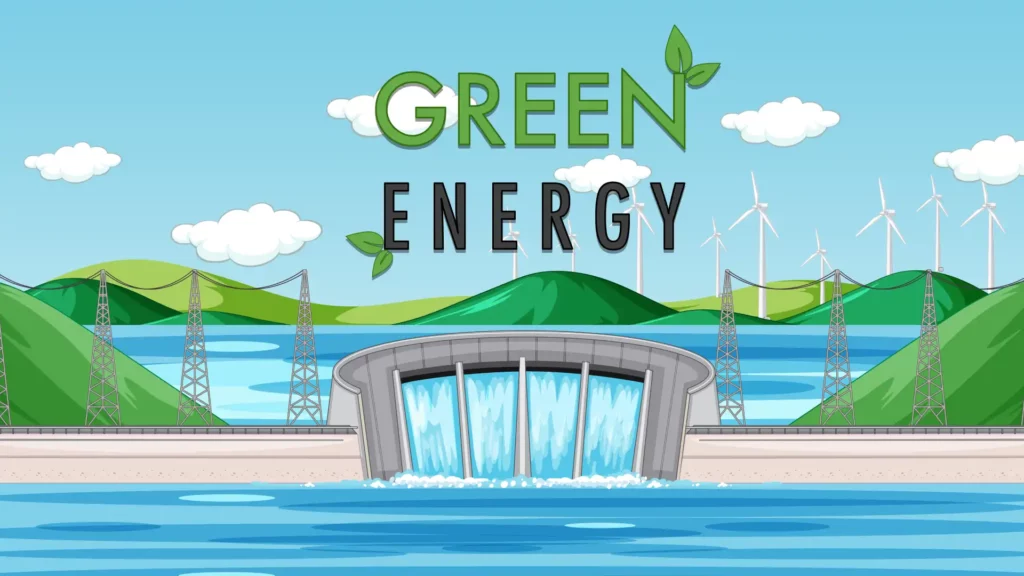
Hydro Green Energy Technologies
- Conventional Hydroelectric Power
Conventional hydroelectric power plants rely on dams to capture the energy of flowing water.
Water stored in reservoirs behind the dam is released through turbines, converting the kinetic energy of the water into mechanical energy, which is then transformed into electricity by generators.
- Run-of-River Hydroelectricity
Unlike conventional hydroelectric dams, run-of-river hydroelectric systems do not require large reservoirs.
Instead, they utilize the natural flow of rivers to generate electricity, often with minimal environmental disruption. Run-of-river projects typically involve diverting a portion of the river's flow through a penstock to drive turbines.
- Pumped Storage Hydropower
Pumped storage hydropower stores electricity during low demand and releases it during high demand. It has two reservoirs at different elevations.
Excess electricity pumps water from the lower to the upper reservoir. When demand increases, water is released to generate power.
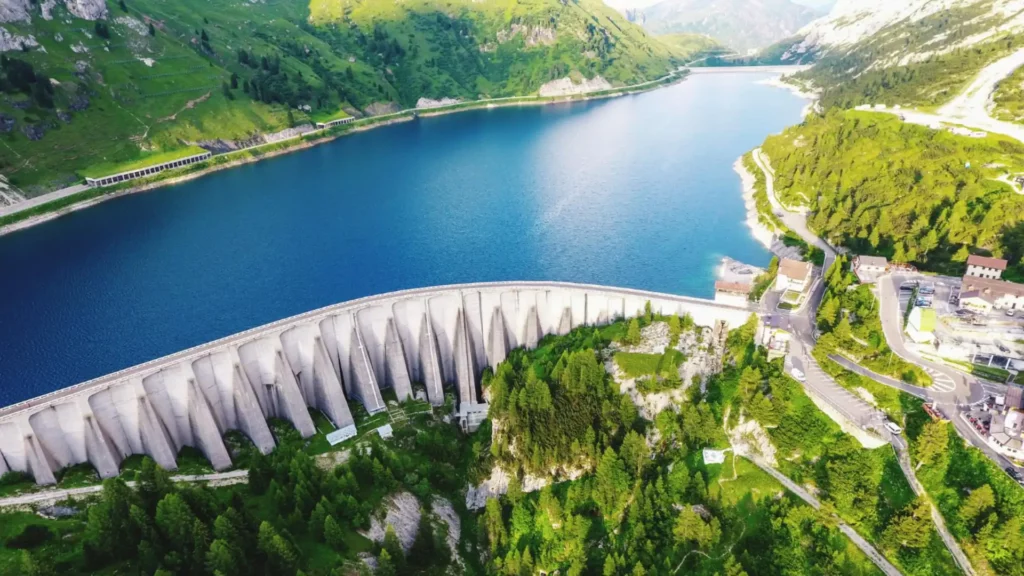
Exploring Hydro Alternative Energy Inc: A Leader in Sustainable Solutions
Hydro Alternative Energy Inc. is at the forefront of pioneering sustainable energy solutions, specializing in hydroelectric power generation and innovation.
Here are some key insights into the company:
- Cutting-Edge Technology: Hydro Alternative Energy Inc. leverages cutting-edge technology and engineering expertise to develop efficient and environmentally friendly hydroelectric power projects.
- Commitment to Sustainability: Sustainability is at the core of Hydro Alternative Energy Inc's mission. By harnessing the power of water to generate clean electricity, the company contributes to reducing carbon emissions and combating climate change.
- Community Engagement and Collaboration: Hydro Alternative Energy Inc actively engages with local communities and stakeholders throughout the project lifecycle.
- Global Impact: With a portfolio of projects spanning diverse geographical regions, Hydro Alternative Energy Inc is making a significant global impact in the transition towards sustainable energy systems.
- Vision for the Future: Hydro Alternative Energy Inc envisions a future where clean and renewable energy sources play a central role in meeting the world's growing energy demands.
- Corporate Social Responsibility: As a responsible corporate citizen, Hydro Alternative Energy Inc prioritizes corporate social responsibility (CSR) initiatives that benefit local communities and promote sustainable development.
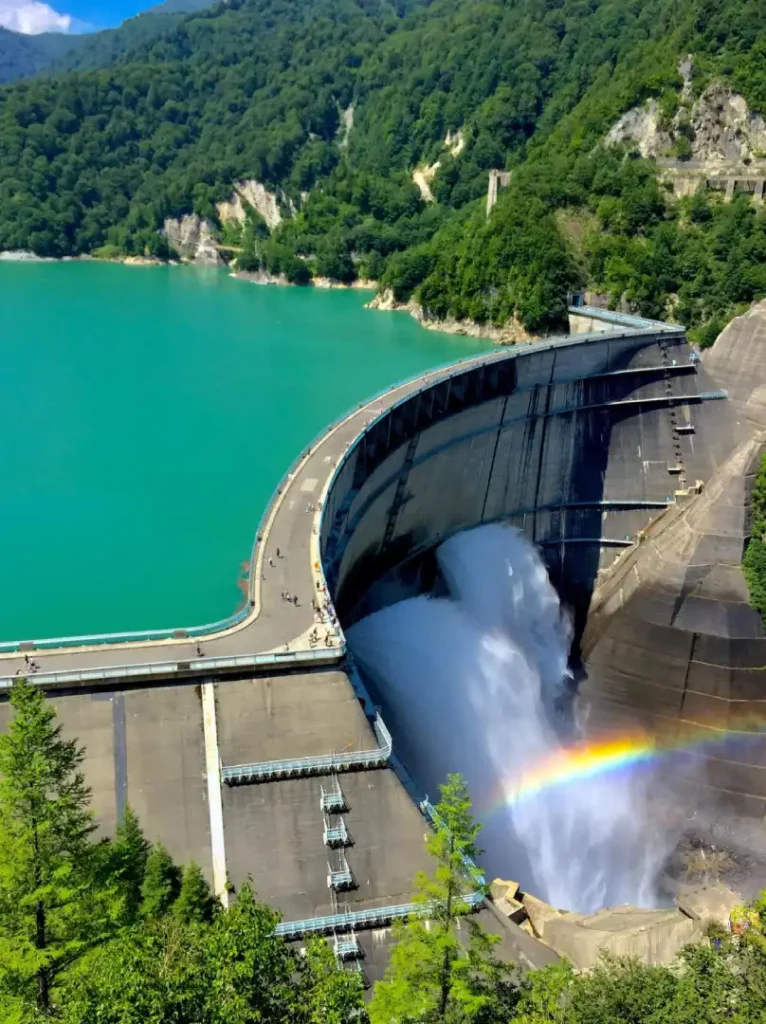
Hydro Green Energy Challenges and Considerations
While hydro green energy offers numerous benefits, it is not without its challenges and considerations:
- Environmental Impact: The construction of large hydroelectric dams can have significant environmental consequences, including habitat disruption, altered river flow, and impacts on aquatic ecosystems. Careful planning and mitigation measures are essential to minimize these effects and preserve biodiversity.
- Socioeconomic Impacts: Hydroelectric projects can result in the displacement of communities and disruption of traditional livelihoods. Proper stakeholder engagement, resettlement planning, and equitable benefit-sharing mechanisms are critical to addressing social impacts and ensuring that affected communities receive fair compensation and support.
- Limited Site Availability: Not all regions have suitable geography or water resources to support large-scale hydroelectric development. Additionally, securing permits and approvals for dam construction can be a lengthy and challenging process, further limiting the availability of viable sites for hydro green energy projects.
- Climate Change Vulnerability: Climate change poses risks to hydroelectricity generation by altering precipitation patterns, reducing snowpack, and affecting river flows. Long-term planning and adaptive management strategies are necessary to mitigate the impacts of climate change on hydro green energy infrastructure.
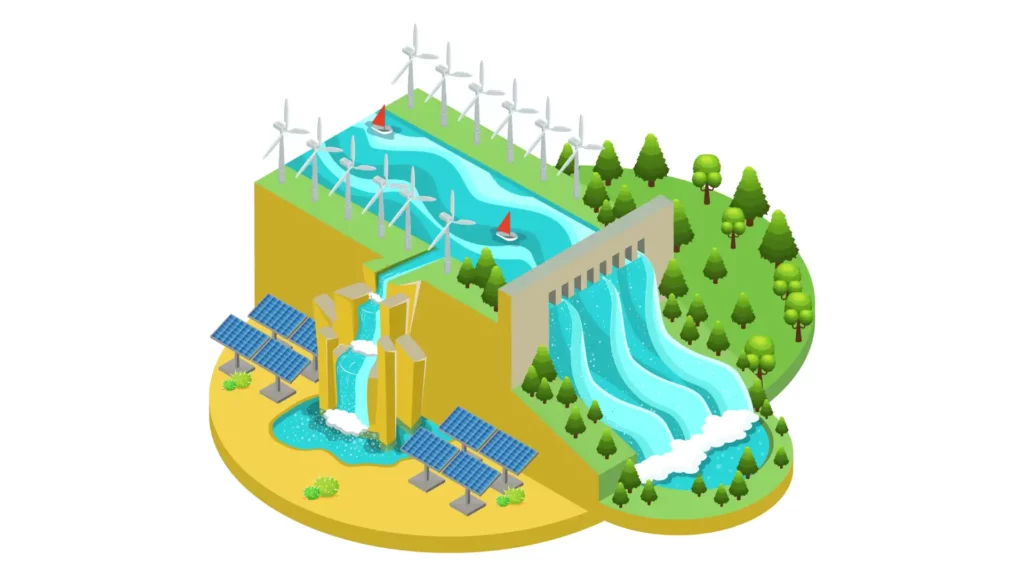
FAQs About Hydro Green Energy
How Does Hydro Green Energy Compare to Other Renewable Energy Sources?
Hydro green energy, also known as hydroelectric power, offers several advantages over other renewable energy sources. Unlike solar and wind power, which are intermittent and dependent on weather conditions, hydroelectricity provides a reliable and consistent source of energy. Additionally, hydroelectric dams have a longer lifespan compared to wind turbines and solar panels, contributing to their sustainability and cost-effectiveness over time.
What is Hydro Green Energy LLC, and what services does it offer?
Answer: Hydro Green Energy LLC is a leading renewable energy company specializing in hydroelectric power generation. As a dedicated provider of clean and sustainable energy solutions, Hydro Green Energy LLC designs, develops, and operates hydroelectric projects to harness the power of water resources for electricity generation. With a commitment to environmental stewardship and innovation, Hydro Green Energy LLC offers a range of services, including project development, engineering, construction, and operation of hydroelectric facilities.
Can Small-Scale Hydroelectric Systems Be Implemented in Urban Areas?
Yes, small-scale hydroelectric systems, also known as micro-hydro or mini-hydro systems, can be implemented in urban areas, provided there is access to flowing water, such as rivers or streams. These systems can be integrated into existing infrastructure or built as standalone installations, offering a decentralized and sustainable energy solution for urban communities.
How Does Pumped Storage Hydropower Work?
Pumped storage hydropower facilities act as giant batteries, storing excess electricity during periods of low demand and releasing it when demand is high. These facilities consist of two reservoirs positioned at different elevations. During off-peak hours, surplus electricity is used to pump water from the lower reservoir to the upper reservoir. When electricity demand rises, water is released from the upper reservoir to generate power through turbines.
What Role Does Hydro Green Energy Play in Climate Change Mitigation?
Hydro green energy plays a crucial role in climate change mitigation by providing a low-carbon alternative to fossil fuels for electricity generation. Unlike coal or natural gas power plants, hydroelectric dams produce minimal greenhouse gas emissions, helping to reduce the carbon footprint of the energy sector. Additionally, the flexibility and reliability of hydroelectric power contribute to grid stability and resilience in the face of climate-related challenges.
What Are the Economic Benefits of Hydro Green Energy?
Hydroelectric projects offer various economic benefits, including job creation, infrastructure development, and revenue generation for local communities. The construction and operation of hydroelectric dams create employment opportunities across various sectors, including engineering, construction, and maintenance. Additionally, revenue generated from electricity sales can support local economies and fund public services and infrastructure projects.
How Can Communities Benefit from Hydro Green Energy Projects?
Communities located near hydroelectric projects can benefit in several ways, including access to clean and reliable electricity, job opportunities, and economic development. Additionally, hydroelectric dams can provide flood control, water management, and recreational opportunities, enhancing the quality of life for local residents.
What Are the Challenges Associated with Hydro Green Energy Development?
Hydro green energy development faces various challenges, including environmental concerns, regulatory hurdles, and limited site availability. The construction of large hydroelectric dams can have significant environmental and social impacts, requiring careful planning and mitigation measures. Additionally, securing permits and approvals for dam construction can be a complex and time-consuming process, further complicating project development.
How Can Individuals and Communities Support Hydro Green Energy Adoption?
Individuals and communities can support hydro green energy adoption by advocating for policies that promote renewable energy development, investing in clean energy technologies, and participating in community-based renewable energy projects. Additionally, adopting energy-efficient practices and reducing energy consumption can help decrease reliance on fossil fuels and accelerate the transition to a sustainable energy future.
Hydro Green Energy Conclusion
Hydro green energy stands as a beacon of hope in the global transition towards a more sustainable and resilient energy future.
With its renewable nature, low emissions, and multifaceted benefits, hydroelectric power offers a viable solution to the dual challenges of climate change and energy security.
By harnessing the power of flowing water, we can pave the way for a greener, cleaner, and more prosperous world for generations to come.

